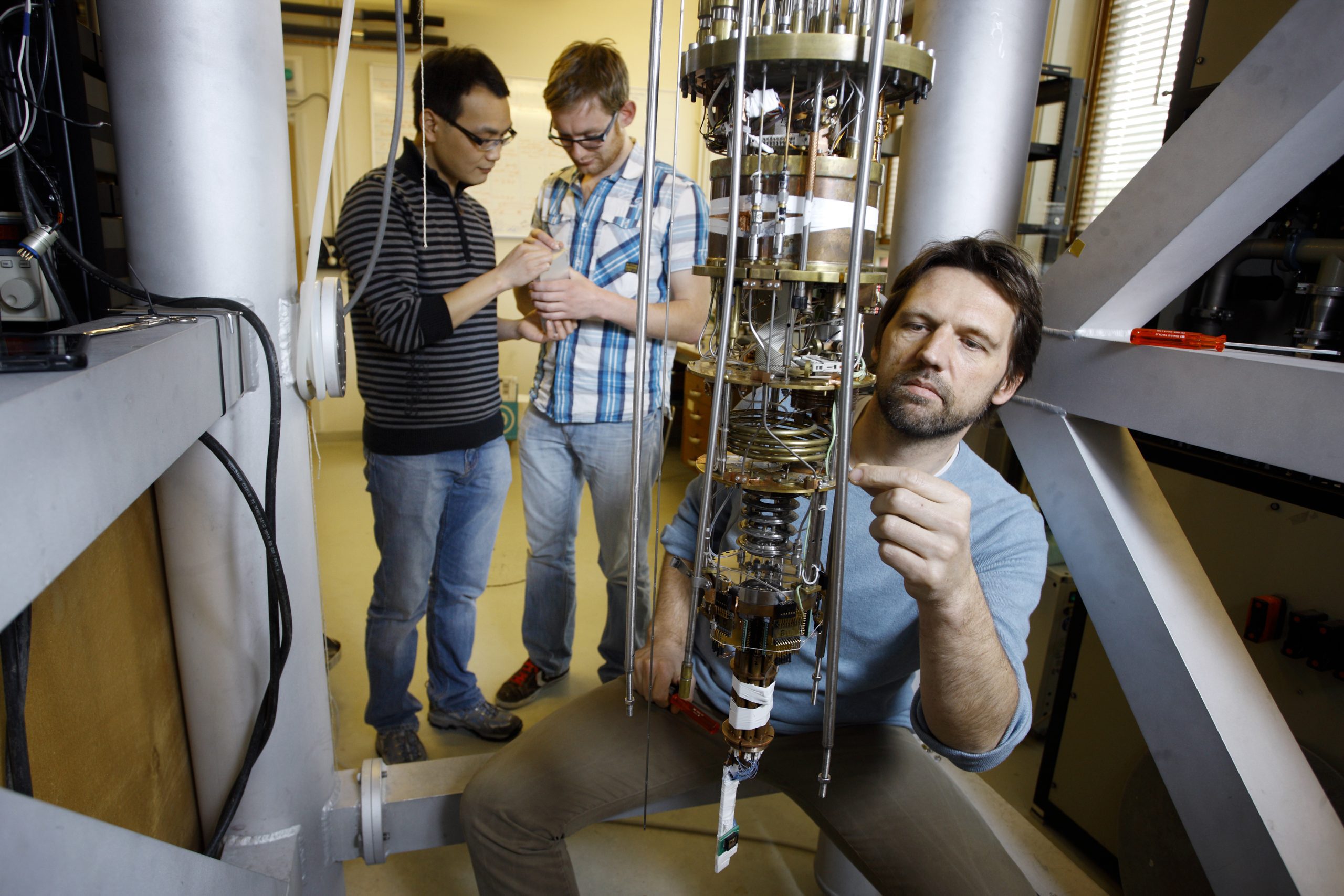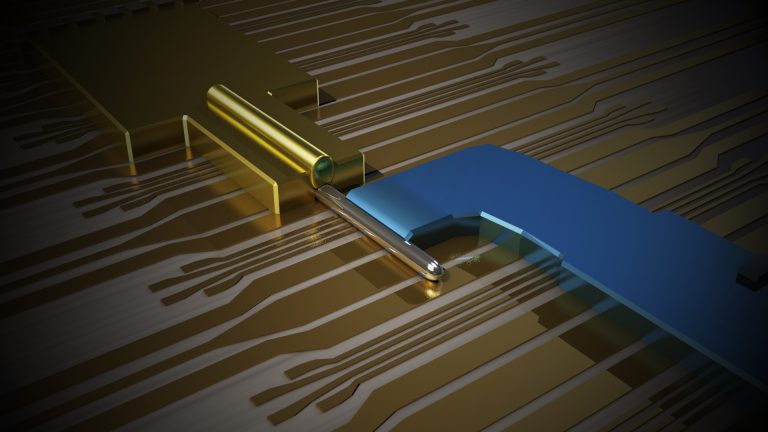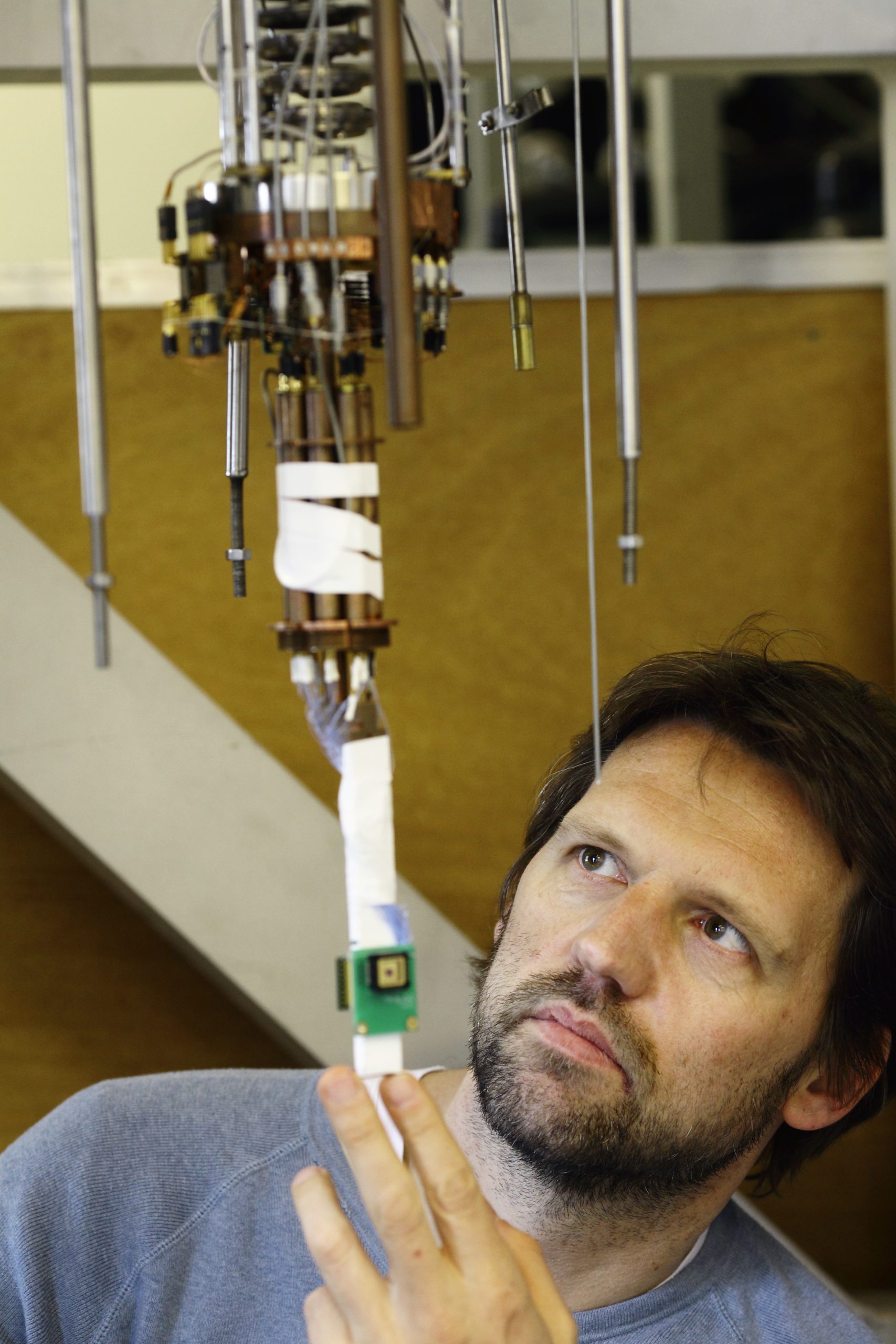An elementary particle that was predicted 75 years ago by the Italian physicist, Ettore Majorana, has now been detected by Professor Leo Kouwenhoven and his Kavli institute team, in collaboration with FOM and TU/e.
Het StuDoc werd dinsdagmiddag 26 april officieel geopend door het ‘levende standbeeld’ Cornelis Lely. Met het centrum heeft Civiele Techniek en Geowetenschappen er in de oude faculteitsbibliotheek 45 stille werkplekken bij. “Daarmee komen we tegemoet aan wensen van studenten en optimaliseren we de studievoorzieningen op de hele TU”, zei decaan Louis de Quelerij tijdens de opening.
As a world’s first, the researchers succeeded in creating a device and circumstances in which the Majorana fermions emerged. They published their findings in Science.
All elementary particles in physics have their own antiparticle or opposite charge, such as the electron and the positron. But there is only one particle that is its own particle: the Majorana fermion, as proposed by the Italian physicist, Ettore Majorana, who derived it from Dirac’s equation (a 1927 connection between special relativity and quantum mechanics). After Majorana’s enigmatic death, the mysterious (anti)particle was more or less forgotten.
In the 1970s however the hunt for Majorana’s was restarted using large accelerators and detectors, since the missing particles were seen as possible candidates for the mysterious dark matter in the universe. This search is ongoing at CERN in Geneva.
A number of theoretical physicists meanwhile thought it might also be possible to create Majorana’s under very specific circumstances, instead of detecting them in the wild. The first proposals date back ten years, but those proposals were not very practical. Only very recently, in 2010, two academic groups (Roman Lutchyn from the University of Maryland, and Yuval Oreg from the Weizman Institute in Israel) launched practical and nearly identical proposals in Physical Review Letters aimed at creating Majorana’s. They predicted that the elusive particles will appear at the contact between a semiconducting nanowire and a superconductor.
 Chasing Majorana’s
Chasing Majorana’sChasing Majorana’s
“We had already published a number of studies involving nanowires, superconductors and magnetic fields,” says TU Delft’s Professor Leo Kouwenhoven. “I guess that made us the prime candidate for the chase. So, in spring 2010, we were contacted by Microsoft for the Majorana hunt and we agreed to join.” Two years later, the group has now published their sightings of ‘Signatures of Majorana Fermions’ in Science (12 April 2012).
The day of the publication was an absolute madhouse at the faculty. Three TV crews filmed more or less simultaneously and PhD students Kun Zuo and Vincent Mourik, both lead authors of the Science article, assisted the crews as best they could. Even posing and faking measurements were part of the job for a day.
So what did they measure and how can they be so sure it really was a Majorana they detected? Prof. Kouwenhoven argues that a particle that is its own antiparticle can have no electrical charge, no spin and no energy (which makes it hard to detect). The theoretical physicists say such a particle may be realized by combining a superconductor with a special semiconductor having a large spin-orbit interaction.
 No other explanation
No other explanationNo other explanation
The TU Delft researchers designed and developed a special chip for their measurements. At the centre of this chip is a semiconducting nanowire made of indium-antimony (known for its strong spin-orbit coupling) and just a few micrometres long. One side of it is connected to a gold contact, and a stretch of superconducting material connects to the side of the nanowire. The prediction is that Majorana’s will form, at very low temperatures and at certain magnetic field strengths, in the nanowire at both edges of the contact with the superconductor.
What Mourik and Zuo measured in an endless series was thatthe contact between the nanowire and the superconductor, which is the supposed location of one of the Majorana’s, is only conductive for electrons with zero energy. If they used a higher or lower voltage, electrons were bounced at the boundary and did not cross over to the superconductor. “The Majorana presents itself in our measurements as a peak in the conductance at zero voltage,” Prof. Kouwenhoven explains.
In the Science publication, the researchers show that the phenomenon only works, and works representatively, if all ingredients, like magnitude and direction of magnetic field, spin-orbit coupling and superconductor, are present. Take out one, and the Majorana is gone. “No one has found an alternative explanation for our measurements,” says Prof. Kouwenhoven, smiling.
Vincent Mourik, a PhD student for the past 18 months, is fascinated by the project: “It’s a whole new phenomenon. There are the theoretical physicists who do a prediction, and we try to verify it in the lab. So you go step by step into the unknown. It’s fascinating.”
His colleague Kun Zuo says this is only the beginning: “We put ‘signature’ in the title, because we do not have the definite proof. When we succeed in changing the phases of Majorana’s, we’ll see a whole new field of statistics that has never been seen before in physics.”
“These new experiments have a highly theoretical character, with many new concepts,” says Prof. Kouwenhoven. “We’ll work on this together with Carlo Beenakker’s group at the University of Leiden. The new statistics of these particles are not only interesting for fundamental science; it is also the reason why Majorana’s may be used in quantum computers.”
V. Mourik, K. Zuo, L.P. Kouwenhoven, Signatures of Majorana Fermions in Hybrid Superconductor-Semiconductor Nanowire Devices, Science, 12 April 2012. doi: 10.1126/science.122360
→ V. Mourik, K. Zuo, L.P. Kouwenhoven, Signatures of Majorana Fermions in Hybrid Superconductor-Semiconductor Nanowire Devices, Science, 12 April 2012. doi: 10.1126/science.122360
–> Science News: Physicists discover new type of particle – sort of



Comments are closed.